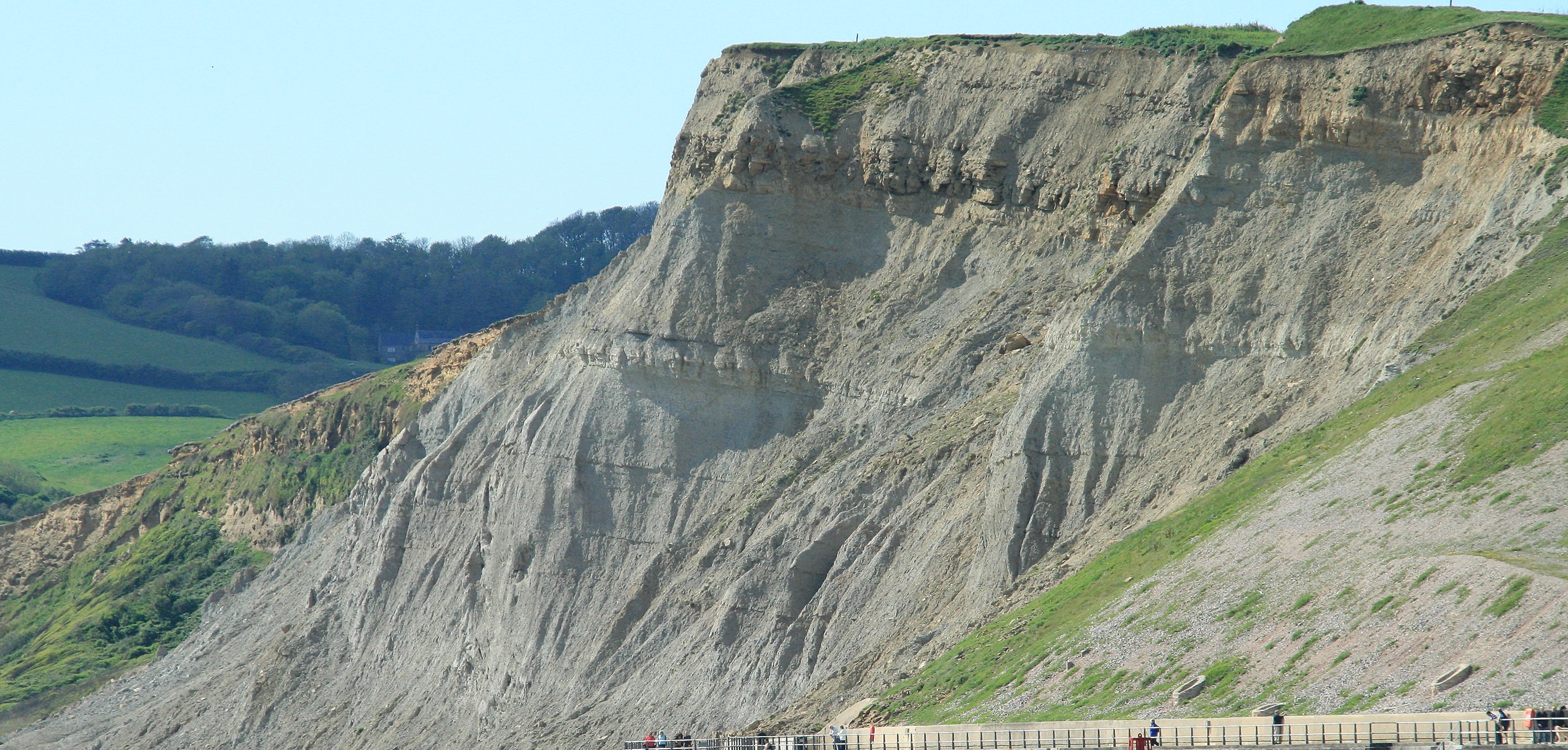All the rocks we see along our stretch of coast were laid down in the oceans. As we can clearly see they come along in many different varieties both in terms of colour but also in form. These different rock types are, in the main, generated as a result of differences in the type and rate of sediment that was being weathered away from the surrounding mountains and which then flowed via ancient rivers and valleys into the sea. Imagine a series of large rivers, such as the Mississippi, flowing down into a large and expanding sea basin. That is the type of scenario in which the rocks we see were deposited. Writing this in the winter, when it can be just a bit cold and grey whilst out on the water, it always cheers me up to looks at the cliffs which were formed in ancient sub-tropical and hence "nice and warm" seas.
There are three key types of material in the rocks that we see here: -
- "Sand" - more precisely rock minerals such as quartz, often formed by mechanical weathering of source rocks, breaking this up into its constituent minerals
- "Mud" - softer clay minerals , often formed as the by-product of chemical weathering of source rocks
- "Limestone" - minerals precipitated out of the sea either by the action of animals making shells, or chemical processes such as evaporation
In places where there is a strong supply of directly weathered rock then "Sand" is the main material entering the oceans, and what is formed are sandstones such as the golden/red sandstones rocks in East Cliff.
In places where the supply of material is slower, then the proportion of "Mud" will increase leading to greyer, softer types of rocks, such as the Fullers Earth that we see in West Cliff. This slower deposition rate could be due to less weathering, or could just be that it is happening further offshore when the sands have already been deposited closer to the shore.
Finally in places where the rate of animals' activity exceeds the supply of materials from the land then the rocks will be comprised more of "Limestone" and then rock such as the Inferior Oolite (the crumbly shelly rock that is seen at the top of East Cliff) form.
Perhaps not surprisingly as the Jurassic proceeds and as the source mountains get worn down there is a gradual trend from earlier Sand based rocks to later rocks being more likely to be Muds or Limestones. You can sort of see this (if you row far enough out so that things "average out") as the cliffs to the West being more yellow (i.e. with sands) and the cliffs to the East beyond Hive beach being greyer (i.e. full of clay).
However, this is only a very gradual trend and the alterations that we see in the cliffs around West Bay today are likely to be related more to significant sea level fluctuations and/or geological faults (more on these later).
Before moving on to discuss Sea Level changes it is probably worth calling out for completeness the other types of rocks. Rocks can be classified into three categories: -
- Sedimentary rocks - which have been deposited as described above. (All the rocks we seen on our coastline are sedimentary).
- Igneous Rocks - which have been formed from molten rock that has then cooled. These could be extrusive rocks, solidified lava from volcanoes, or intrusive rocks, which were formed by the solidification of molten rock within the crust.
- Metamorphic Rocks - which are rocks created by the action of temperature and pressure on other rocks, and are typically formed when rocks are buried or mixed together deep within the crust.
If our club was (heaven forbid) based in Cornwall then we might find ourselves rowing past all three types of rocks. Cornwall has Sedimentary rocks like us, but also both types of Igneous rocks, (Lavas on the North Coast and Granites around Lands End and in the interior), and also Metamorphic rocks such as the Serpentine found on the Lizard Peninsular. It is probably quite lucky that we don't row there or I might find more things to lecture you on whilst rowing!
Next Section - The influence of Sea Level
Previous Section - The Wider Picture
Back to Introduction



